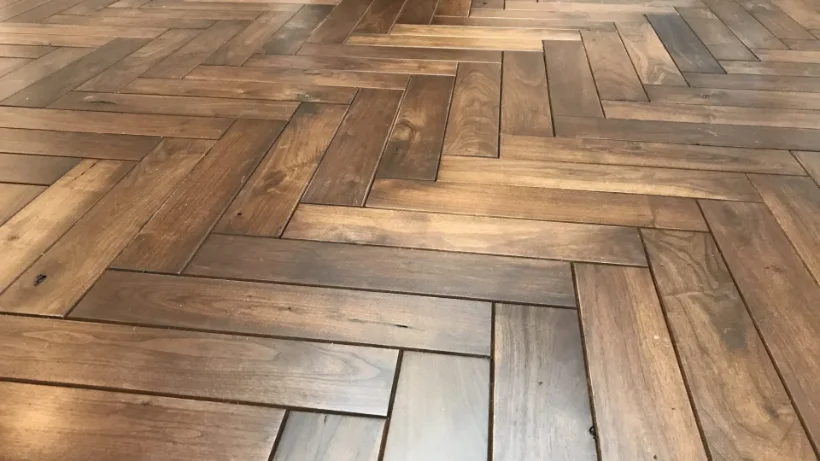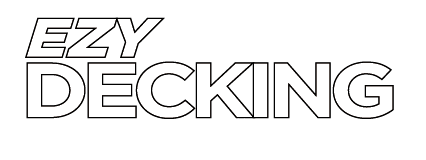
Considering numerous flooring options can be daunting and confusing. Various terminologies, such as herringbone flooring vs parquet, can baffle Australian homeowners, mainly when used interchangeably. There’s no need to fret and fume if you’re in this position.
As a highly experienced and trusted Brisbane hybrid flooring supplier, we’re here to help. This blog will explain herringbone and parquet flooring facts to avoid confusion and ensure clarity so you can make sound, long-term home-buying decisions.
What’s The Difference Between Herringbone And Parquet Floors?
Comparing herringbone vs parquet flooring can be confusing for many homeowners. However, you can relax knowing that there’s not much difference between them.
Herringbone is a particular pattern within parquet flooring. The former’s distinct, staggered zigzag patterns have added timeless glamour to numerous indoor spaces for centuries. On the other hand, the latter refers to the flooring type utilising small wood blocks or chips arranged in geometric shapes. It’s an umbrella term for different patterns, including chevron, basketweave, and square versions.
In simpler terms, all herringbone flooring is a type of parquet floor. However, not all parquet is herringbone. The following sections will delve deeper into each term to enlighten you further and dispel confusion.
What Are Parquet Floors?
Parquet floors consist of small wooden blocks and planks in complex, decorative patterns.
This flooring type traces its roots to 17th-century France. Builders replaced the Palace of Versailles’ marble floors with parquet flooring, making an indelible impression on French royalty. Since then, these floors have become a popular interior design alternative in residential and commercial buildings worldwide.
Homeowners and business owners love parquet flooring’s versatility. Builders can arrange different patterns, aesthetics, and styles, including classic herringbone, allowing endless creative possibilities.
Several parquet flooring versions include the following:
- Chevron: This arrangement features sloped planks that converge in the middle and are cut at a 45-degree angle, creating an effect similar to herringbone floors.
- Basketweave: Builders arrange and interweave rectangular blocks to mimic a woven basket.
- Versailles: This classic, elegant wooden floor resembles the original layout from the Palace of Versailles in 17th-century France, consisting of geometric square and diagonal patterns enclosed in a square frame.
Other prominent parquet floor alternatives include the double herringbone and subway floors. These layouts’ customisable features allow them to seamlessly integrate with any interior design aesthetic, making them popular among Australians.
What Is Herringbone Flooring?
Herringbone is a parquet flooring pattern that mimics chevron. However, manufacturers cut herringbone at a 90-degree angle, creating staggered V-shaped patterns and a distinct zigzag design.
Herringbone traces its origin to ancient Rome, where builders used it for road construction. They laid bricks in interlocking patterns that stabilised and strengthened busy roads, creating a unique pattern that has endured for centuries.
This zigzag design is one of the most distinct and recognisable parquet flooring types on the market. Whether you prefer rustic, traditional, or contemporary aesthetics, herringbone wooden floors provide excellent value for money. Their classic oak, rich walnut, or modern light-tone versions elongate dense, cramped interior spaces and appeal to many Australian homeowners.
Major Differences Between Herringbone & Parquet Floors
| Attribute | Parquet Floors | Herringbone Floors |
|---|---|---|
| Definition | An umbrella term for decorative wood flooring with geometric patterns, including herringbone, Versailles, chevron, and basketweave. | A parquet flooring subset consisting of rectangular planks arranged in staggered, zigzag patterns. |
| Visual Appeal | They come in numerous aesthetic patterns that complement any style. | They have elegant, dynamic visuals that elongate cramped, dull spaces. |
| Usage | They are appropriate for expansive interiors, living areas, and hallways. | They are suitable for most indoor living spaces, especially small and narrow areas. |
| Price | $40 AUD/m² to $200 AUD/m², depending on the wood version and design complexity. | $56 AUD/m² to $167 AUD/m², depending on timber type and assembly complexity. |
| Ease of Installation | We strongly recommend delegating complicated pattern arrangements to highly skilled and experienced professionals. | Easier than some parquet versions but requires uncanny accuracy. |
| Upkeep | Parquet floors require frequent sweeping and vacuuming and careful mopping. | Herringbone wooden floors’ simple patterns may be easier to clean with similar maintenance. |
| Resilience | They are extremely robust, but may require refinishing over time. | They are resilient and can withstand heavy foot traffic with proper upkeep. |
Herringbone and Parquet Design Flooring Types
Parquet flooring’s wide material variety provides Australian homeowners with numerous choices, including solid timber, engineered wood, luxury vinyl, and laminate tiles, that can spruce up and elongate their indoor living spaces and enhance curb appeal.
Regardless of your durability, maintenance, and cost preferences, you will find a parquet flooring solution for your needs and budget.
Solid timber flooring parquet and herringbone pattern considerations include the following:
- These floor designs are solid long-term investments that enhance elegance and property value.
- Homeowners can resand and refinish solid timber floors multiple times to significantly increase their lifespans.
- Their rich, smooth textures improve the ambience of many indoor living spaces.
- Solid timber flooring’s disadvantages include steep costs and temperature and moisture susceptibility.
As a trusted Sydney hybrid flooring supplier with extensive industry experience, we strongly
recommend that homeowners choose solid timber floors for their living areas, dining rooms, bedrooms, and vintage homes.
On the other hand, considerations for herringbone and parquet-engineered wood flooring include:
- Engineered wood is generally more affordable and authentic than solid timber.
- This floor type’s durable construction can withstand warping in extreme temperatures.
- Manufacturers recommend sanding down engineered wooden flooring with a 3-6 mm wear layer one to three times during its lifespan.
We strongly urge you to consider engineered wood flooring for open-plan living areas and residences with heated floors.
Key takeaways for luxury vinyl tiles (LVT) for herringbone and parquet flooring include the following:
- LVT is robust flooring that can endure moisture, stains, and scratches.
- Luxury vinyl tiles are an affordable, low-maintenance option for busy homeowners who want to stick to their budgets.
- Unfortunately, LVT is unsuitable for refinishing and might require replacement after several years.
- Although luxury vinyl tiles can imitate real wood floors, they aren’t genuine.
For these reasons, LVT is appropriate for kitchens, bathrooms, laundry rooms, and rental properties.
Finally, points to remember for laminate parquet and herringbone flooring include:
- Laminate flooring can withstand scratches and dents.
This parquet and herringbone floor type provides homeowners with a stylish, budget-friendly option for elegant indoor living spaces. - Its easy installation makes it appropriate for DIY enthusiasts.
- Although laminate flooring is water-resistant, it isn’t as resilient as solid timber, engineered wood, and LVT.
We recommend using laminate floors for hallways, living areas, and bedrooms.
When Is the Use of Herringbone Flooring Undesirable?
Although herringbone floors have provided homeowners with numerous aesthetic and functional benefits for centuries, they aren’t appropriate for small or high-traffic areas. Although herringbone can elongate these spaces, the zigzag design can make the room cluttered and busy.
If you prefer herringbone flooring for your indoor living space, we recommend lighter wood shades, including pale oak or ash, to brighten up your surroundings. Choosing darker colours can produce the opposite effect. Wider herringbone planks can make your room feel more expansive than overly narrow ones.
Herringbone flooring is costlier than conventional plank floors because the former’s angled cuts produce more material waste. The herringbone version also takes longer to assemble. Considering a reputable contractor is better than going the DIY route because it saves homeowners time and effort.
If you’re on a tight budget, cost-effective laminate or LVT herringbone flooring can be a game-changer for your indoor living space. Your service provider can also recommend the most suitable flooring type for your home that won’t break the bank.
Our Most Popular Herringbone Hybrid Flooring Styles
Be sure to view the most popular herringbone hybrid flooring styles among our customers:
- Natural Oak Herringbone Hybrid Flooring
- Blackbutt Herringbone Hybrid Flooring
- Hamptons White Herringbone Hybrid Flooring
Conclusion
Herringbone and parquet flooring can be confusing for many Australian homeowners. The latter is an umbrella term that includes various elegant wood floor types, including chevron, basketweave, and Versailles, that make your living space sophisticated and functional.
Considering the pros and cons of different herringbone and parquet design flooring versions can help you make an enlightened home-buying decision. If you need help with this endeavour, contact us today.
Our staff can create an upfront, personalised quote, schedule an on-site inspection, and recommend elegant, cost-effective hybrid floors for your needs and budget.





